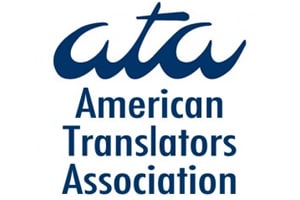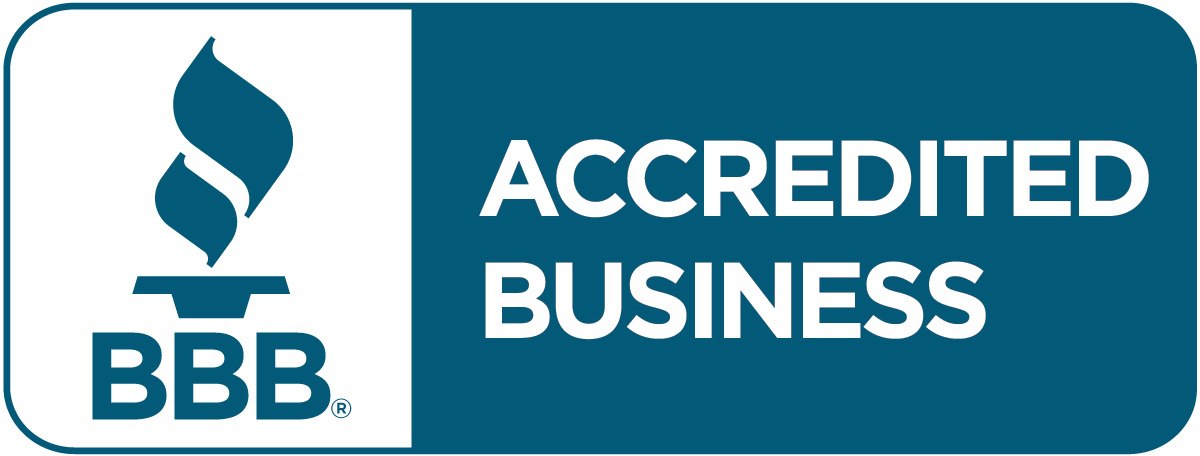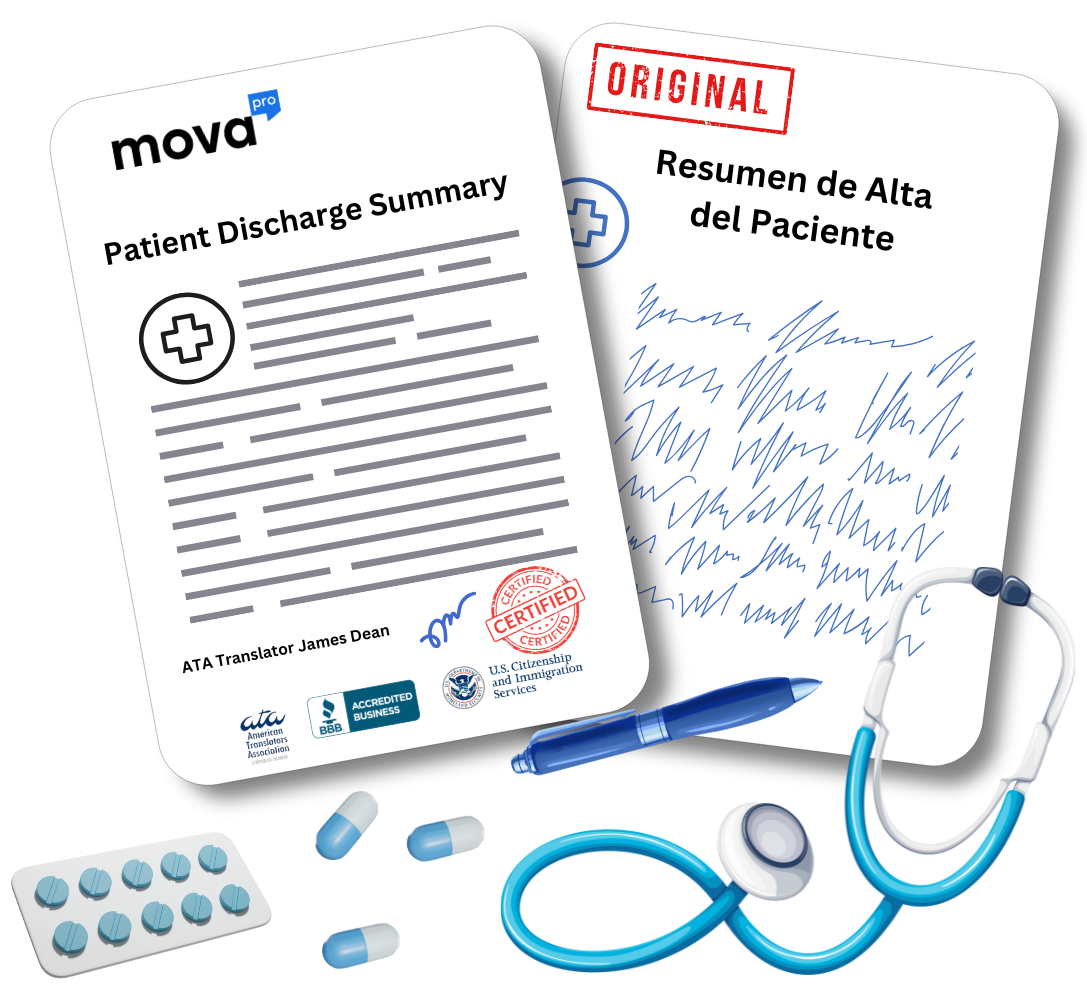Precise and Certified Medical Translation Services
- Native-speaking translators with medical expertise
- Certified and notarized translations available
- 24-hour turnaround for most documents




The Key Advantages of Using Our Medical Translation Services
Expert Medical Translators
Our native-speaking medical translators ensure precise and industry-specific translations for all medical documents.
Certified and Notarized
Certified translations meet legal and regulatory standards, with notarization and apostille services available for global validity.
Fast and Affordable
Fast turnaround times—most translations are completed within 24 hours without compromising accuracy.
Expert Medical Translators
- Native speakers with backgrounds in healthcare or medical translation
- Specialized knowledge in diverse medical fields and terminology
Certified and Notarized Translations
- Fully compliant with U.S. legal and court requirements
- Optional apostille services for U.S.-issued documents
Fast and Reliable Turnaround
- Most translations completed within 24 hours
- Ideal for urgent medical needs and deadlines
Request a precise quote now!
Language barriers in healthcare can significantly impact patient outcomes and medical research advancement. When you need to communicate critical medical information across different languages, medical translation becomes your important bridge to ensuring accurate and effective healthcare delivery. Your success in reaching global audiences, whether for clinical trials, medical device documentation, or patient care, depends on precise translation that maintains the integrity of complex medical terminology. Understanding this vital need, professional medical translators work to help you navigate the intricate landscape of multilingual healthcare communication, ensuring your medical content resonates with target audiences while maintaining scientific accuracy.
Medical Translation Fundamentals
A comprehensive understanding of medical terminology, healthcare practices, and regulatory requirements forms the foundation of professional medical translation. Your success in this field depends on mastering these elements while staying current with evolving medical knowledge. When you work with medical content, you need to consider not just the language conversion, but also the cultural context and specific requirements of different healthcare systems.
Core Principles
At the heart of medical translation lies accuracy, consistency, and attention to detail. Your work must reflect precise terminology usage and maintain the exact meaning of the source text. When you translate medical documents, you’re handling sensitive information that directly impacts patient care. Statistics show that 59% of healthcare providers consider accurate translation vital for providing quality care to patients with limited language proficiency.
Quality Standards
On your journey to deliver excellence in medical translation, you must adhere to internationally recognized quality standards such as ISO 17100 and ISO 9001. Your translations need to meet strict regulatory requirements set by organizations like the FDA, EMA, and WHO. Quality assurance in medical translation typically involves a three-step verification process.
And when you investigate deeper into quality standards, you’ll find that implementing a robust quality management system is vital. Your translation process should include terminology management, style guides, and regular quality audits. Research indicates that implementing standardized quality control measures can reduce translation errors by up to 40% and improve overall document accuracy by 75%.
Technical Requirements
Now that you’re considering medical translation services, understanding the technical requirements is important for your project’s success. You’ll need to ensure your translation partner has advanced CAT tools, terminology management systems, and secure data handling protocols. For comprehensive medical document translation services, you must verify that your provider follows ISO standards and maintains HIPAA compliance for handling sensitive medical information.
Language Expertise
Beside having native speakers, your medical translation team should possess advanced linguistic qualifications in both source and target languages. You’ll benefit from translators who understand regional variations, medical terminology, and cultural nuances specific to your target markets. Your projects require professionals who can maintain consistency across all documents while adapting to different medical specialties and healthcare systems.
Medical Knowledge
Expertise in medical sciences is fundamental for your translation projects. Your translators should have backgrounds in healthcare, life sciences, or related fields. You need specialists who understand complex medical terminology, regulatory requirements, and healthcare protocols to ensure accurate translations of your clinical documentation, research papers, and patient information.
Plus, you’ll want to confirm that your translation team stays current with medical advancements and industry regulations. Your medical content requires translators who regularly update their knowledge of pharmaceutical developments, medical device innovations, and healthcare practices. This ensures your translated materials maintain scientific accuracy while meeting regulatory compliance standards in different markets.
Cultural Considerations
Some medical translation projects require deep understanding of cultural nuances and healthcare practices across different regions. When you work on medical content translation, you need to consider cultural sensitivities, local medical terminology preferences, and region-specific healthcare approaches. Your translations must respect cultural beliefs while maintaining medical accuracy.
Cross-Cultural Communication
About 75% of medical translation challenges stem from cultural differences in healthcare communication. When you translate medical content, you must navigate between different approaches to doctor-patient relationships, varying levels of medical disclosure, and diverse cultural attitudes toward health and treatment. Your translations need to bridge these cultural gaps while preserving the medical message.
Regional Adaptations
On average, medical documents require 30% more contextual adaptations than other technical translations. You’ll find that medical terminology, measurement units, and regulatory requirements vary significantly across regions. Your translations must align with local healthcare standards and practices to ensure effective communication.
Another important aspect of regional adaptations in medical translation is the consideration of local healthcare systems and insurance terminology. When you translate medical documents, you need to account for differences in healthcare delivery models, insurance practices, and administrative procedures. Your translations should reflect these regional specificities to ensure clear understanding among healthcare providers and patients.
Medical Documents We Frequently Translate
We provide certified translations for a wide range of medical documents, ensuring accuracy and compliance for both individual and corporate clients.
Why Choose Our Medical Translation Services?
- Experienced Medical Translators: Our translators are native speakers with backgrounds in healthcare or medical translation. Each specialist focuses on specific medical fields, ensuring precision in terminology and context.
- Certified and Notarized Translations: We provide certified translations that meet legal and regulatory standards. Notarization is available for documents requiring additional validation.
- Two-Layer Quality Control: Every document is reviewed by a second translator with medical expertise, ensuring accuracy and compliance with industry requirements.
- Fast 24-Hour Turnaround: We understand the urgency of medical translations. Most documents are delivered within 24 hours to meet tight deadlines.
- Confidential and Secure: We prioritize data security and confidentiality, ensuring sensitive medical information is protected throughout the translation process.
Looking to translate financial reports, tax documents, or audit filings? Upload your documents today for a free quote.
FAQ
Find the answers to the most frequently asked questions!
What types of medical documents do you translate?
We translate a wide range of medical documents, including medical records, prescriptions, clinical trial documents, patient information leaflets, discharge summaries, and medical device manuals.
Who performs the translations?
Our medical translations are carried out by native speakers with backgrounds in healthcare or medical translation. Translators specialize in specific areas of medicine to ensure accurate and context-specific terminology.
Are your medical translations certified and notarized?
Yes, we provide certified translations for medical documents. Notarization services are also available for documents that require additional legal validation.
How long does it take to receive a medical translation?
Most translations are completed within 24 hours. Larger projects or specialized documents may require slightly longer turnaround times.
What is the cost of medical translation services?
- We offer three pricing tiers:
- Machine Translation with Post-Editing – $0.07 per word, ideal for low-priority medical documents.
- Human Translation with Quality Assurance – $0.10 per word or $25 per page, suitable for general medical files.
- Specialized Medical Translation with Proofreading – Custom pricing based on complexity and document type.
Do you guarantee the accuracy of your translations?
Yes, we stand by the accuracy of our translations. If any errors occur or the translation is rejected due to quality issues, we will correct it immediately or offer a full refund.
How to Order Your Medical Translation
Getting your medical documents translated is simple and fast. Follow these three easy steps:

1. Upload Your Documents
Submit your medical documents through our secure file upload system. We accept all standard formats, including PDF, Word, and scanned images.

2. Receive a Quote and Confirm
We’ll review your documents and provide a detailed quote based on the type of translation required. Choose the tier that fits your needs, and confirm the order.

3. Translation and Delivery
Our medical translation experts get to work immediately. Most translations are completed within 24 hours. Once finished, we’ll send the certified or notarized translation directly to your email.
Translation Process
Unlike general translation work, your medical translation process requires specialized knowledge and strict adherence to regulatory requirements. You need to ensure each document undergoes a systematic approach involving terminology research, translation memory utilization, and multiple rounds of verification. When you work with medical content, your translation team must maintain consistency across all documents while adhering to specific style guides and regulatory standards.
Document Assessment
Against starting any medical translation project, you must conduct a thorough assessment of your documents. You need to evaluate the complexity level, technical terminology, target audience, and regulatory requirements. Your document assessment helps determine the specialized resources needed, timeline estimation, and specific quality control measures required for your medical translation project.
Quality Control Methods
Behind every successful medical translation, you’ll find robust quality control methods. Your translation undergoes multiple layers of review, including subject matter expert verification, terminology consistency checks, and final proofreading. These steps ensure your medical content maintains accuracy and compliance with industry standards.
Also, your quality control process includes specialized software tools that help identify potential issues in terminology consistency, formatting, and numerical accuracy. You receive detailed quality assurance reports documenting each step of the review process. According to industry data, implementing comprehensive quality control methods reduces translation errors by up to 95% in medical documentation.
Regulatory Compliance
Keep your medical translation projects aligned with regulatory requirements across different markets. Your compliance with FDA, EMA, and other health authority guidelines is crucial for successful market entry. You need to ensure your translated medical documentation meets the stringent standards set by regulatory bodies in each target region. With proper regulatory compliance in medical translation, you can avoid costly delays and potential legal issues.
International Standards
Along with regulatory compliance, your medical translations must adhere to international standards such as ISO 17100 for translation services and ISO 13485 for medical devices. You’ll find that following these standards ensures consistency and quality in your translated medical content. Your compliance with these standards demonstrates your commitment to excellence in medical translation and builds trust with healthcare professionals worldwide.
Documentation Requirements
Behind every successful medical translation project lies meticulous documentation. Your translation process must include comprehensive records of terminology decisions, revision histories, and quality control measures. You need to maintain detailed documentation to support regulatory submissions and demonstrate compliance with international standards.
Even the smallest details in your medical translation documentation can impact regulatory approval. You must ensure that your translation files, reference materials, and quality assurance records are properly maintained and readily accessible. Your documentation should include certified translations, translator qualifications, and detailed revision logs to support potential audits and regulatory reviews.
Technology Integration
Despite rapid advancements in medical translation technology, your success in this field depends on combining human expertise with digital tools. Modern translation processes integrate artificial intelligence, machine learning, and specialized medical databases to enhance accuracy and efficiency. You’ll find that technology integration can reduce translation time by up to 40% while maintaining high precision in medical terminology.
Translation Tools
One of the most significant advantages you’ll gain from using specialized medical translation tools is access to comprehensive terminology databases. These tools can help you maintain consistency across your medical documents, with features like translation memory systems that store previously translated segments. You’ll find that these tools can increase your translation accuracy by up to 30% while reducing the risk of terminology errors.
Digital Solutions
Before selecting digital solutions for your medical translation needs, you should evaluate their compatibility with healthcare compliance requirements. Modern platforms offer features like automated quality checks, terminology management, and collaborative workflows that can streamline your translation process while ensuring regulatory compliance.
At the forefront of medical translation technology, you’ll find innovative solutions that integrate with electronic health records (EHR) systems. These platforms can help you manage multilingual patient documentation more efficiently, with studies showing that integrated digital solutions can reduce translation turnaround times by up to 50% while maintaining high accuracy standards in medical terminology.



